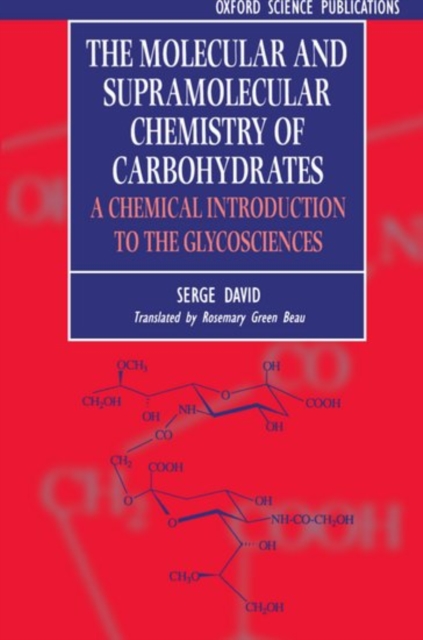
The Molecular and Supramolecular Chemistry of Carbohydrates : Chemical Introduction to the Glycosciences Paperback
by Serge (Emeritus Professor, University of Paris-Sud) David
Paperback
- Information
Description
There is currently a great deal of interest in carbohydrate research among chemists and biologists, in both academic and industrial laboratories.
One reason is the involvement of oligosaccharide molecules in many recognition phenomena in the living world.
Another reason is the growing demand for chiral synthesissugars are an amazingly cheap source of chirality but must be efficiently processed.
Thirdly the role of conformation in carbohydrate interactions hasstimulated much experimental and theoretical work.
There are causal links between advances in each of these fields, from molecular orbitals to immunochemistry, so that no research worker in his narrow specialisation can afford to ignore what is going on elsewhere.
Thus a body of knowledge has been builtfrom what is now called the 'glycosciences'.
This book attempts to describe glycosciences in their true perspective. Organic chemistry is the backbone of the presentation, but carbohydrate chemistry offers a wealth of supramolecular associations.
This book is unique, among similar texts on carbohydrates, in that half its content is devoted to the description of important examples of such interactions. The opening chapters deal with the problems of configuration, conformation, derivatization,and modifications of monosaccharides, with examples on their utilization in total synthesis.
The anomeric effectthe most popular of all stereoelectronic effects, and a gift to carbohydrate chemists and chemists in generalis discussed at length.
The following chapters deal with oligosaccharides; theessentials of enzymic synthesis, with its high performances; and the sialic acids, which are at the forefront of carbohydrate research.
The author describes recognition reactions, including blood group phenomena, interactions involving sialic acids, the active site of heparin, tumour markers, and selectins.
The association of sugars with small molecules, notably with inorganic species, is the subject of another chapter.
Throughout the book, great attention has been given to practical detailsespecially in the description of experiments involving unfamiliar techniques.
Many tables, figures, diagrams, experimental protocols and a survey of the literature up to March 1996 will help the reader to understand the salient facts and visualize a broad spectrum of ideas.
Information
-
Unavailable
- Format:Paperback
- Pages:330 pages, numerous line figures, tables
- Publisher:Oxford University Press
- Publication Date:16/10/1997
- Category:
- ISBN:9780198500469
Information
-
Unavailable
- Format:Paperback
- Pages:330 pages, numerous line figures, tables
- Publisher:Oxford University Press
- Publication Date:16/10/1997
- Category:
- ISBN:9780198500469